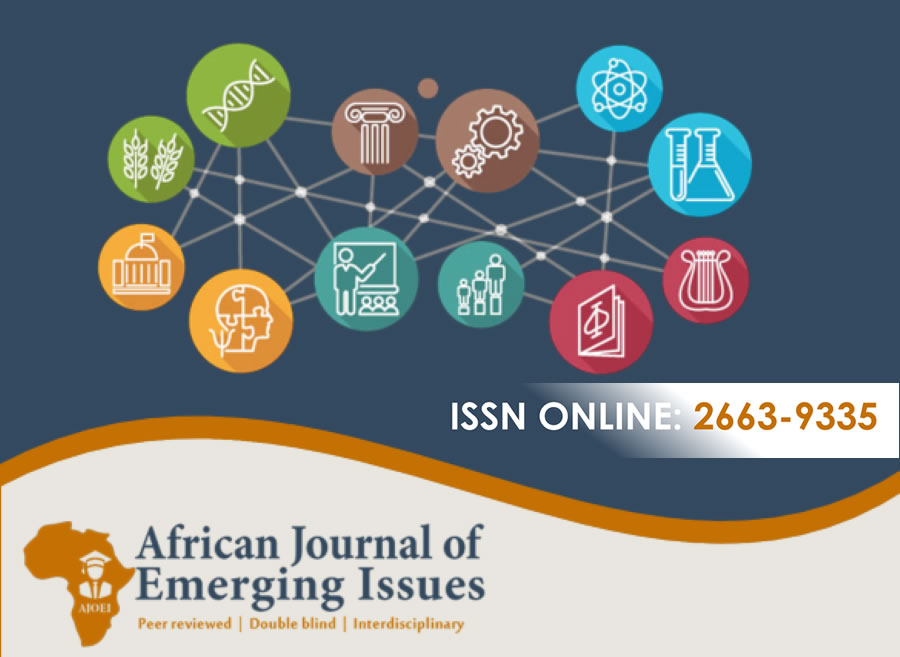FACULTY PERCEPTION AND SUPPORT TOWARDS USE OF INFORMATION COMMUNICATION TECHNOLOGIES ON QUALITY OF DISTANCE TEACHING AND LEARNING IN KENYAN UNIVERSITIES
Abstract
Background: Information Communication Technologies (ICTs) have transformed the way people live, work, do business and access education. With advent of ICTs, distance learning has become an alternative and supplement for face-to-face learning. This study investigated the influence of faculty perception and support towards use of ICTs on quality of Distance teaching and learning.
Methodology: The study was guided by mixed methods research approach. Specifically, convergent parallel design which is a mixed methods approach was used. The target population was universities that offer programmes through open, distance and e-learning (ODeL) targeting ODeL directors, lecturers who taught ODeL students and ICT technical staff from the selected universities that offer programmes through this mode. A sample size comprised of (4) ODeL directors, (78) lecturers, (4) ICT technical staff. Stratified, systematic and purposive sampling were used to sample the respondents. Among all the universities that offer ODeL programmes, four universities were purposively sampled for the study. Data was collected by use of document analysis guide, questionnaires and interview guide. Cronbach alpha correlation method was used to compute reliability co-efficient which was 0.8095 which was above 0.7 as expected in social sciences. To ensure reliability in qualitative data, interview guide with highly structured questions, with the same format and sequence of words was used for each participant. Descriptive statistics involving mainly frequencies, percentages and means were used to analyze the data. Logistics Regression, specifically Wald Test, was used to test the null hypotheses. Omnibus test of model coefficients and Hosmer and Lemeshow Tests were used to test the fitness of the models. Data was presented in graphs and tables. Analysis of quantitative data was done using Predictive Analytical Software (PAS) version 20.0. Qualitative data was coded and analyzed in themes emerging from the narratives.
Results: The study revealed that faculty perception and support on use of ICTs was significant factor that influences quality of distance teaching and learning in selected Kenyan universities.
Recommendations: The study recommended that to enhance quality in ODeL, faculty perception and support on use of ICTs in distance teaching and learning was very critical.
Keywords: Perception, Distance Teaching; Distance Learning; ICTs; Quality
References
Commission for University Education. (2014). Universities Standards and Guidelines. Retrieved from www.cue.or.ke/index.php/downloads/category/6-standards-and-guidelines
Creswell, J. W. (2015). A Concise Introduction to Mixed Methods Research. London: SAGE Publications.
Fu, J. (2013). ICT in Education: A Critical Review and its Implications. International Journal of Education and Development using Information and Communication Technology (IJEDICT),9(1),112–125. Retrieved from ijedict.dec.uwi.edu/include /getdoc.php?id=5402
Gakuu, C. (2006). Analysis of the Factors and Attitudes that Influence Lecturers' Readiness to adopt ICT in Teaching. The case of University of Nairobi. Nairobi, Kenya: University of Nairobi.
Gakuu, C. & Kidombo, H. (2010). Pedagogical Integration of ICT in Selected Kenyan Secondary Schools: Application of Bennetts Hierarchy. School of Continuing and Distance Education, 1(1), 73 – 94. Retrieved from scholar.google.com/citations?user=-p3cBAgAAAAJ&hl=en
Ghavifekr, S. Athirah, W. & Rosdy, W (2015). Teaching and learning with technology: Effectiveness of ICT integration in schools. International Journal of Research in Education and Science (IJRES), 1(2), 175-191. Retrieved from https://files.eric.ed.gov/fulltext/EJ1105224.pdf https://doi.org/10.21890/ijres.23596
Ghavifekr, S., Kunjappan, T., Ramasamy, L., Anthony, A. (2016). Teaching and Learning with ICT Tools: Issues and Challenges from Teachers’ Perceptions. Malaysian Online. Journal of Educational Technology, 4(2), 38-57. Retrieved from https://files.eric.ed.gov/fulltext/EJ1096028.pdf www.mojet.net
Gikonyo, N.W. (2012). Factors influencing university managers' participation in distance education: A case of public universities in Kenya. PhD thesis. University of Nairobi. Retrieved from http://erepository.uonbi.ac.ke/handle /11295/7105
Hosmer, D. Lemeshow, S. & Sturdivant, R. (2013) Applied Logistics Regression, (3rd ed.). doi:10.1002/9781118548387.Wiley online library
Hoy, K. W. & Miskel, G. C. (2001). Educational Administration: Theory, Research and Practice (6th ed.). New York: McGraw Hill, Inc.
Keiyoro, P. N. (2010). Investigation of Factors that Influence the Use of ICT In teaching and learning Science Curriculum in Kenyan Secondary Schools. A case of Cyber and Nepad e-schools, (University of Nairobi). Retrieved from erepository.uonbi.ac.ke/handle/11295/3954
Mbugua, J. (2012). Factors influencing educational managers’ support for distance education mode of delivery: the case of western region, Kenya. (Unpublished thesis). University of Nairobi. Retrieved from repository.uonbi.ac.ke/handle /11295/843
Mbwesa, J. (2010). Faculty perceptions on the effectiveness of WEDUSOFT as a learning management system. Journal of Continuing, Open and Distance Education, 18(1) 25-42. Retrieved from http://distance-education.uonbi.ac.ke/sites/default/files/cees /
Mugenda, A. (2008). Social Science Research: Theory and Principles. Nairobi, Kenya: ACTS Publishers.
Mutuma, L. (2005). ICT Integration in Education: An Integrated Approach. Nairobi - Kenya: Rinny.
Nyerere, J. (2016). Open and Distance learning in Kenya. A Baseline Report Commissioned by Commonwealth of Learning. Kenya Retrieved from http://oasis.col.org/handle/11599/2491
Nyerere, K. A., Gravenir F. Q. & Mse, G. S. (2012). Delivery of open, distance and e-learning in Kenya. International Review of Research in Open and Distance Learning, 13 (3), 184-203. Retrieved from http://www.irrodl.org/index.php/ irrodl/article/view/1120/2203 https://doi.org/10.19173/irrodl.v13i3.1120
Olusola, A. J. & Alaba, S. O. (2011). Globalization, Information and Communication Technologies (ICTs) and Open/Distance Learning in Nigeria: Trends, Issues and Solution. Turkish Online Journal of Distance Education, 12(3), 66–77. Retrieved from https://eric.ed.gov/?id=EJ965052
Ozcan, H. & Yildirim, S. (2018). Administrators’ Perceptions of Motives to offer Online. Programs in Universities. International Review of Research in Open and Distributed. Learning, 19(1), 327-341. http://www.irrodl.org/index.php/irrodl/article/view/3422
Republic of Kenya. (2005). Sessional paper No 1 of 2005 on Policy framework for Education Training and Research. Government of Kenya Press. Retrieved from www.idea-phd.net/images/doc-pdf/.../policy-framework-for-education-training.pdf
Republic of Kenya. (2012). Sessional Paper No 14 of 2012: A Policy Framework for Education and Training in Kenya: MOEST. Retrieved from
UNCHE (2009). The State of Higher Education and Training in Uganda 2011: Kampala. Uganda. Retrieved from www.unche.or.ug/download-attachment/256/
UNESCO (2010). Education for All Global Monitoring Report: Reaching the Marginalized. Oxford: Oxford University. Retrieved from unesdoc.unesco.org/
UNESCO (2013). Technology, Broadband and Education. Advancing the Education for All Agenda: A Report by the Broadband Commission Working Group on Education. Paris - France: UNESCO. Retrieved from unesdoc.unesco.org/images/0021/002196/219687e.pdf





